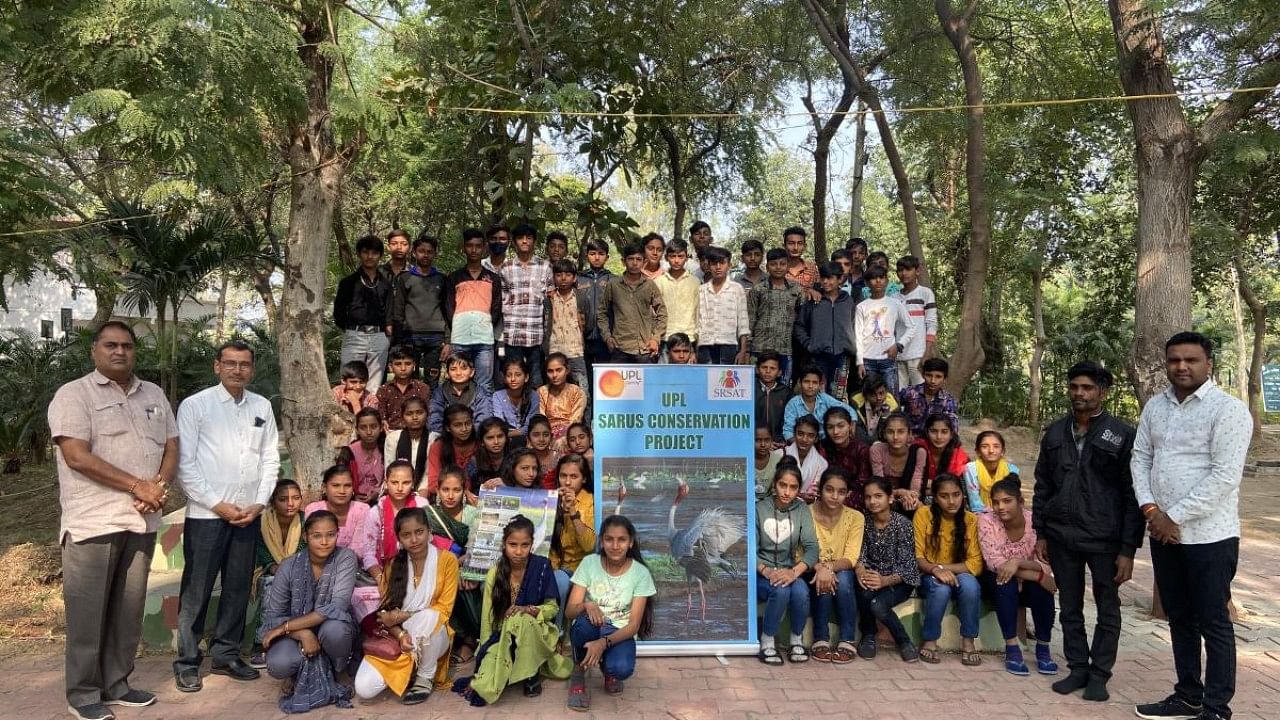
The Indian Sarus Crane is facing multiple threats but an initiative involving multiple stakeholders, including farmers in Kheda in Gujarat, has helped nearly double the population.
Sarus Crane (Grus Antigone) traditionally lives in wetlands and in association with humans, using agricultural fields for its feeding and breeding habitat.
The decline in the number of wetlands and the deterioration of existing habitats are considered to be the main reasons for the decline of the Sarus.
The species is found outside the protected area network and is dependent on human tolerance for its survival and peaceful coexistence.
They are categorised as Vulnerable under the International Union for Conservation of Nature (IUCN) Red List and Schedule I of the Wildlife Protection Act.
Gujarat holds the second-highest population of Sarus in the Kheda and Anand districts.
The Mumbai-headquartered UPL Ltd has undertaken the Sarus Conservation Project in Kheda to raise awareness about the need to conserve these majestic birds.
The project works in collaboration with State Forest Department, GEER Foundation, and other stakeholders, as well as with the farmers in correcting their misconceptions and changing behavioural attitudes towards the Sarus through education and voluntary participation.
The impacts are now visible in the annual increase of the population from 500 in 2015-16 to 992 in 2021- 2022 and re-nesting by Sarus in the same crop fields, according to a press statement issued in Mumbai.
UPL has brought together local communities, conservationists, farmers, school, and college students to create a network of protected Sarus Crane habitats. This network of protected areas will be linked to a network of community-managed wetlands so that Sarus Cranes have access to safe and suitable breeding grounds.